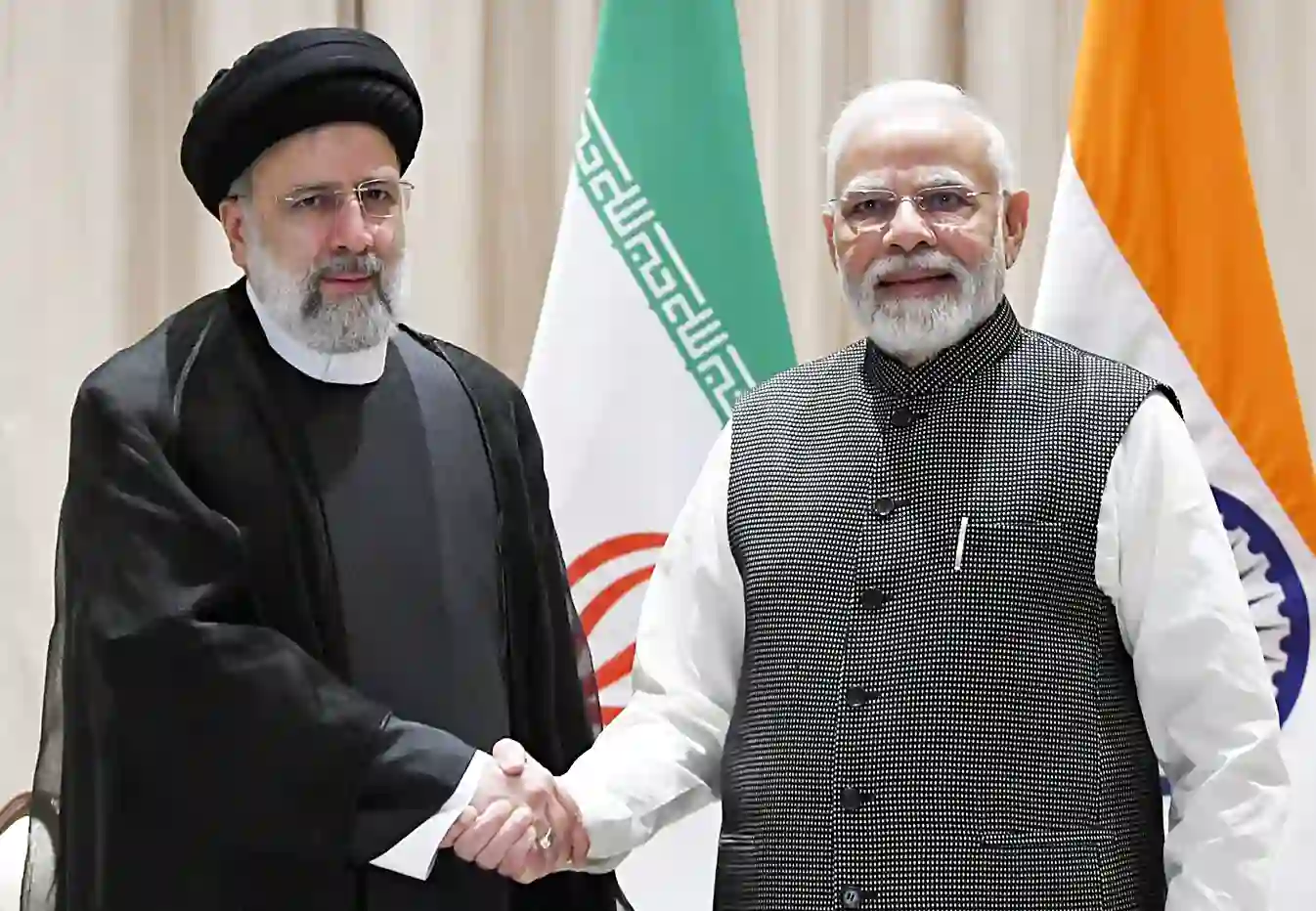

PM Modi meets Iranian President Ebrahim Raisi on the sidelines of the SCO in Samarkand
Two recent developments have brought the strategic importance of Iran into India’s foreign policy calculus. As per reports, Iran and India are close to finalizing the long-term arrangements for operating the Chabahar port.
Secondly, Iran became a member of the Shanghai Cooperation Organization (SCO) whose Summit was held at Samarkand in Uzbekistan last week. The likely conclusion of the nuclear deal between Iran and world powers will only underscore the growing significance of Iran to the geopolitics of Eurasia, Persian Gulf region and of India.
Iran’s pivotal geographical location and the probable connectivity links that it can offer is one of the most important assets. Iranian ports like Bandar Abbas and Chabahar are key transit points for the trade corridors connecting India and the Indian Ocean with the Inner Asia.
The International North South Transit Corridor (INSTC) which has been in the strategic discourse for almost two decades, without much progress, has suddenly come alive with the Russia-Ukraine War. Recently, a trial for the INSTC route was successfully undertaken. Two 40-foot containers were shipped from St Petersburg in Russia for India via land as well as maritime components of the INSTC coming into play. The containers came via Southern Russia, Caspian Sea and Iran to India.
The port of Bandar Abbas is a key connecting node for the INSTC, which will link India’s West Coast to Russia via transport corridors passing through Iran, Caucasus, and the Caspian Sea region. Sometimes, it is pitched as the alternative route bypassing the Suez Canal that will also save time. With the Western attempts to isolate Russia and impose sanctions, the critical role of corridors like the INSTC can’t be undermined.
The port of Chabahar was being developed as an entry point for India’s outreach to Central Asia and Afghanistan. India has already shipped food and medicines to Afghanistan via the Chabahar route. The capture of power by the Taliban in Afghanistan changed the strategic dynamics regarding Chabahar. However, the port is back in the discussions and as India stages a comeback in Afghanistan, the role of Chabahar is likely to increase even further. Chabahar will link southern Afghanistan to India and will perhaps be useful to reach out to the factions within the Taliban that are influential in the region around Kandahar.
In this context of emerging connectivity corridors, Iran emerges as a pivot that will link Caucasus and Russia as well as land-locked Afghanistan and Central Asia to India. Taken together, there could be two major arteries of the connectivity corridors passing through Iran that will form the “V” shaped transport links: one will reach Afghanistan and Central Asian states while the other will reach the Caucasus and Black Sea region. Iran is a connecting point of the “V” on which both corridors will come together. The growing trade amongst the countries located along these corridors will open up opportunities for developing infrastructure as well as deepening strategic and economic ties. India would be able to leverage the opportunities not just to trade but to build infrastructure along both these axes.
Iran’s membership in the SCO will add further boost to these transport corridors. The role of Iran is critical as a key node for connectivity and for the evolution of regional security structures in the context of Taliban-controlled Afghanistan. Any solution to the Afghan problem cannot exclude Iran. Moreover, the Iranian membership would add further weight to the SCO as the geography of regional grouping would then spread from the icy Arctic in the north, Black and Caspian Seas to the west, Indian Ocean to the south and Pacific to the east. With Iran’s entry into the SCO, all major Eurasian powers would be part of the grouping.
In this evolving geopolitics, India has to find ways to deepen ties with Iran which have been put in the cold storage since the launch of “maximum pressure” campaign by the Trump administration in 2018-19. Iran has already asked India to purchase oil by using the same methods as it is using for buying Russian oil. The incoming Iranian oil will help in ensuring India’s energy security and easing the pressure of rising oil prices which in turn may help in bringing down the domestic inflation as well.
Thus, Iran is critical for India’s strategic, economic and energy interests. The meeting between PM Modi and Iranian President Raisi on the sidelines of the SCO summit is a good start. It is time to re-engage and bring pivotal Iran back into India’s foreign policy fold.
Also Read: Iran seeks long-term contract with India on developing Chabahar Port
Following Tuesday's terror attack in Pahalgam that had left Kashmir Valley in deep mourning and…
Prime Minister Narendra Modi's visit to Jeddah saw the signing of several MoUs in various…
India and the US have finalised terms of reference for the ongoing negotiations for completing…
Moments after his arrival in Delhi early Wednesday, Prime Minister Narendra Modi took a briefing…
World leaders strongly condemned the dastardly terror attack on tourists in Pahalgam in Jammu and…
Prime Minister Narendra Modi on Tuesday held a telephonic conversation with Union Home Minister Amit…